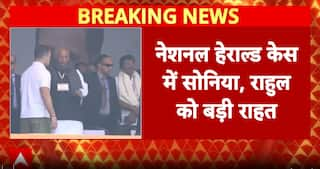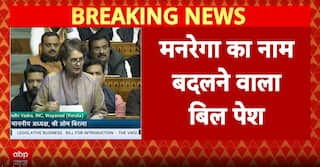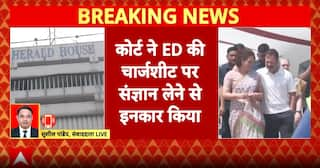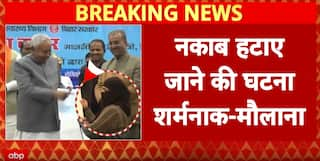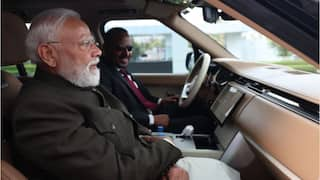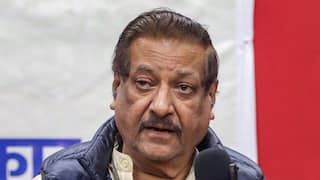Explorer
2016 has been a year of disruptive change

We are exiting 2016 – with one section of the people feeling mauled and battered and a vast majority coming though pangs of change waiting for a new sunrise on the horizon.
The disillusionment of the first group is understandable. First, they are yet to come to terms with the setback of 2014. Like people in America are said to be hoping for a mid-term impeachment of Donald Trump, in India too many were banking upon the prospects of the vanquished erstwhile establishment rising from ashes, as it were, and derail Narendra Modi early in the day. Not only were their calculations belied, as protests like “Award Wapasi” lost steam in no time, but they were bombarded by serial surprises beyond their imagination. Before, they could get their wits together about one – a new missile threw them into disarray.
Each of Prime Minister Narendra Modi’s moves were like “out of syllabus” question in college parlance. Being flummoxed, students usually end up writing stock answers, which in the case of the opposition was blocking of parliament and accuse the government of being anti-poor and pro, a handful of, rich industrialists. Beyond a point even these became stale as was apparent in most major opposition parties refusing to be a part of Rahul Gandhi’s protests.
More than surprises, what rattled the elite class was the loss of entitlement that they had become used to over the years. After the debacle of 2014, the popular prognosis was Narendra Modi had turned the scales by swinging the middle-class onto his side. The poorer sections may have been temporarily swayed by promise of “acche din” but they can be easily wooed back, as it was taken for granted that the new government would pursue a rightist reforms agenda. Hence, slogans like “suit-boot sarkar” were coined at the first opportunity.
All other distractions, real or engineered, like attack against Christians or Beef Ban were of interest only to the middle-class, neither the very poor nor the super-rich. Scare of an unofficial emergency, licence-raid raj and tax-terrorism helped only to rekindle memories of Congress rule. The worst cut was comparing ‘Notebandi’ with ‘Nasbandi’ – a painful reminder of one of the worst physical and psychological atrocity post-independence.
What the opposition, media, left-lib intellectuals and political pundits failed to fathom (or ignored even if they did) was that Narendra Modi was working on a much larger vision and had quietly shifted the goalpost while they were stuck in their own echo chambers.
One can call them rhetoric, but each call of Modi to the masses was backed by a solid action plan. Be it Jan Dhan Yojana, Swacch Bharat, Insurance, Low-cost Housing, LED Bulb Distribution or Free LPG for BPL families (Ujjwala Yojana) everything has been thought through and mapped in great detail for time-bound implementation.
While Congress may rightfully claim Rajiv Gandhi bringing Internet to the country, who stays ahead of the curve determines the winner in a digital age. Proof of this is strewn all over graveyards of dot.com and e-commerce firms. Notwithstanding, Arvind Kejriwal’s questions about his academic qualifications, Narendra Modi understood this better than politicians, who are much younger to him and allegedly more educated.
Digital India is Narendra Modi’s final push to conquer the last bastion of the old order. What economists and politicians may not have figured out is the purpose of Demonetisation goes far beyond its immediate fiscal impact. It would be a mistake to project its impact and prospects based on past benchmarks and economic thesis. In this age of disruptive and discontinuous changes economic theory is being rewritten on real-time.
India saw an explosion in texting much before the West. Large sections of the population, considered technologically challenged, are freely using SMS and WhatsApp on their phones.
Thus, India may surprise the world again by a more rapid conversion to “cashless” – as it becomes a “movement” from just a “push” by the government.
The launch of the BHIM App is a masterstroke. By naming it after Babasaheb Ambedkar and highlighting his contribution to the development of India’s economic policy and the conception of the Reserve Bank of India – Narendra Modi has managed to enlist the support of the weaker sections and blunt the attack of the opposition.
Narendra Modi intuitively knew “Acche Din” that the poor seek is “empowerment” and not dole. It is, in fact, the rich and the middle-class who look for economic sops – which are relatively easier by tweaking policy such as Tax rates.
Structural changes take time, as the groundwork has to be completed before delivery can start. That is what he has been single-mindedly concentrating on in the last two and a half years.
Unfortunately for the opposition, especially Rahul Gandhi’s advisors are still stuck with the old models and axioms when the world has changed beyond recognition. If they do not accept this, they too will soon become extinct like many of the old corporations in this age of disruptive change.
However, the task before Narendra Modi is no less daunting. Like the good old dialectical process of thesis, antithesis and synthesis, he too will have to put the pieces together after disruption and deconstruction. The job of a leader is to bring the ship safely to the harbour after sailing through turbulent waters. That is what his constituents will be expecting of him in 2017 - having stood so patiently in a metaphorical ATM queues for the last two and half years.
Disclaimer: The opinions, beliefs and views expressed by the various authors and forum participants on this website are personal and do not reflect the opinions, beliefs and views of ABP News Network Pvt Ltd.
Follow Blog News on ABP Live for more latest stories and trending topics. Watch breaking news and top headlines online on ABP News LIVE TV
View More








